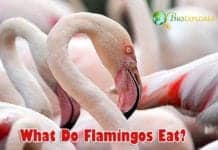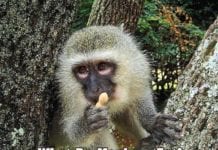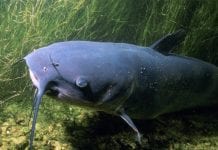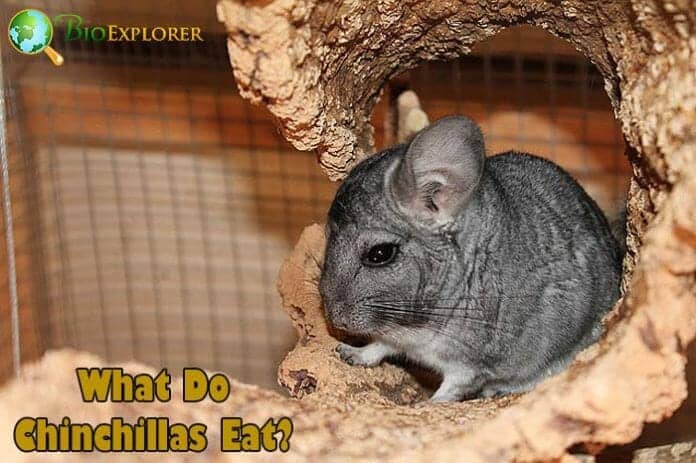
What Do Chinchillas Eat? Chinchillas are attractive little rodents famed for the fluffy appearance that sets them apart from other animals. These rodents are omnivorous, feeding a diet of both plant and animal matter.
These organisms prefer their vegetation diet, evidenced by their preference for grains, nuts, flowers, leaves, and seeds. They also eat roots, mosses, and lichens.
Chinchillas supplement their plant diet by opportunistically feeding on bird eggs and insects like moths and grasshoppers.
Table of Contents
- What Do Chinchillas Eat?
- What Do Long-tailed Chinchillas Eat?
- How Do Long-tailed Chinchillas Hunt?
- Where Do Long-tailed Chinchillas Live?
- What Do Short-tailed Chinchillas Eat?
- How Do Short-tailed Chinchillas Hunt?
- Where Do Short-tailed Chinchillas Live?
- When Do Chinchillas Eat?
- How Often Do Chinchillas Eat?
- What Eats Chinchillas?
- Do Chinchillas Predate on Humans?
- What Role Do Chinchillas Play in the Animal Food Chain?
What Do Chinchillas Eat?
These animals belong to the Chinchillidae family, which they share with close relatives referred to as the viscachas. There are only two species of Chinchillas in the animal kingdom.
| Long-tailed Chinchilla | Chinchilla lanigera | Mostly folivores – seeds, grass, grains, nuts, and leaves. Also, feeds on moths and grasshoppers, and bird eggs. |
| Short-tailed Chinchilla | Chinchilla chinchilla | Primarily herbivores leaves, seeds, grains, nuts, and flowers. Also, insects, bird eggs, moths, grasshoppers. |
![]()
What Do Long-tailed Chinchillas Eat?
| Animalia | Rodentia | Chinchillidae | Chinchilla | Chinchilla lanigera |
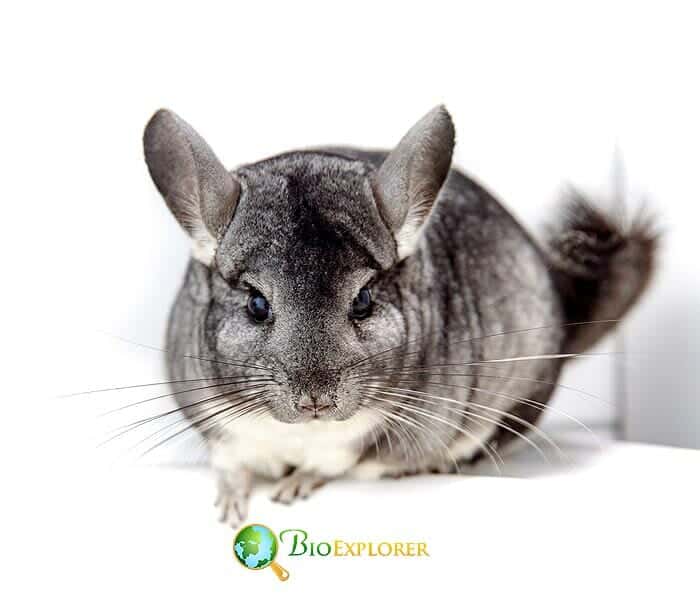
- Long-tailed chinchillas are primarily herbivorous. To be more precise, these furry animals are mainly folivores, preferring a diet made up of vegetation. Some of the food items that make up most of their diet are seeds, grass, grains, nuts, and leaves.
- The long-tailed chinchillas will feed on insects, such as moths and grasshoppers, and bird eggs if the opportunity presents itself. This happens mostly when these insects are in supply within their local niches.
- In the quest to obtain bird eggs, these rodents will go to more extraordinary lengths to reach a bird’s nest or a birdhouse and proceed to steal unattended bird eggs. They will then use their incisors to crack a hole on the side of the egg before proceeding to lick the yolk and other contents.
![]()
How Do Long-tailed Chinchillas Hunt?
Different strategies are used by the long-tailed chinchilla when it comes to hunting insects.
- One primary strategy these rodents display is stalking. In this sense, the long-tailed chinchilla will spot its target and then position itself well to launch a direct attack.
- The rodent will aim to position itself so that it will not appear as threatening to the targeted insect.
![]()
Where Do Long-tailed Chinchillas Live?
Long-tailed chinchillas are one of the two extant rodents endemic to the Andes mountains of South America, particularly at altitudes of between 3, 000 to 5, 000 meters.
- These rodents are mostly found in countries like Chile, Peru, Bolivia, and Argentina. Their typical habitat outlined by the IUCN are rocks or sandy areas, particularly those with patches of shrub, cacti, succulent bromeliads, herbs, and forbs.
- Regarding their physical appearance, the long-tailed chinchillas display sexual dimorphism. Females are larger (often weighing about 800g) than their male counterparts, who are relatively smaller (about 500g).
- The long-tailed chinchillas are more likely to be kept as pets.
![]()
What Do Short-tailed Chinchillas Eat?
| Animalia | Rodentia | Chinchillidae | Chinchilla | Chinchilla chinchilla |
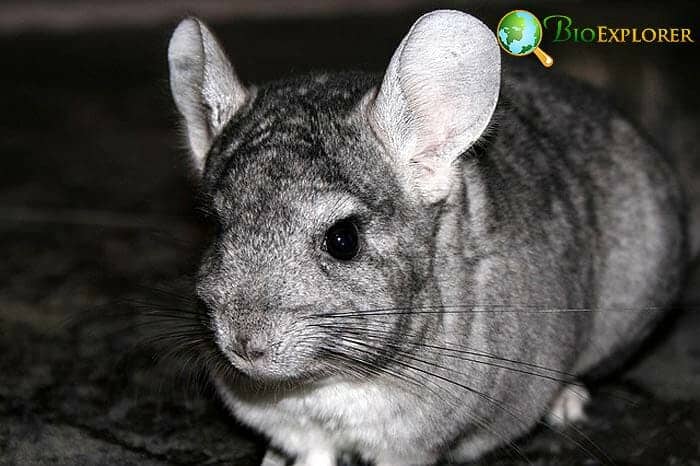
- The short-tailed chinchillas are primarily herbivorous. Their typical food mainly constitutes any vegetation found within their ecosystem. Some of their preferred delicacies include but are not limited to leaves, seeds, grains, nuts, and flowers.
- In dry habitats, these chinchillas will obtain water from morning dew or from cacti flesh.
- The short-tailed chinchillas, like their long-tailed counterparts, will also be found consuming animal material opportunistically. Their preferred source of animal protein is drawn from insects or bird eggs.
![]()
How Do Short-tailed Chinchillas Hunt?
Considering its small size, this rodent’s hunting strategy differs from that of larger meat-eaters.
- This chinchilla often targets smaller-sized insects like moths and grasshoppers. It stalks by standing next to their hideouts. After observing its target, it then proceeds to capture and eat it.
- These chinchillas also capture unattended eggs from bird nests. Their ability to be observant makes them good at finding unattended eggs, steal and consume them.
![]()
Where Do Short-tailed Chinchillas Live?
The short-tailed chinchillas are also referred to as the Bolivian, Peruvian, or Royal chinchillas. As suggested by their different names, these chinchillas are found in the Andes mountains range in Bolivia and Peru. These rodents can also be found in Argentina and Chile.
- Having to live in the harsh weather in the Andes, these chinchillas had to evolve to adapt better to this environment. As a product of evolution, these chinchillas developed soft and dense fur, which is bluish-grey.
- This animal’s fur is considered one of the most precious, preferred luxury clothing industries. Because of their “higher quality” fur compared to their long-tailed counterparts, these rodents are mainly hunted, making them an endangered species in South America. This comes as no surprise considering that humans have since the early 19thcentury been documented to hunt down chinchillas for commercial reasons, driving them close to extinction.
- In efforts to prevent this chinchilla species from being hunted to extinction, law enforcement has enacted strict laws to protect the wild members.
- However, these efforts seem to be gaining slow wins considering that these rodents reside in one of the remote parts of South America, which encourages illegal trappers to hunt them.
![]()
When Do Chinchillas Eat?
Some people may confuse these rodents with being nocturnal because they are primarily active at night. This is false because chinchillas display crepuscular tendencies, meaning they prefer foraging and eating at dusk or dawn.
- Some people may confuse these rodents with being nocturnal because they are primarily active at night. During the day, these animals will often be found resting or taking long naps.
- When resting or napping, chinchillas make their homes in underground tunnels through burrowing or reside in rock crevices.
- Animals like the chinchillas adopted crepuscular tendencies for many reasons, one being as a strategy against predation.
- Wild chinchillas are more of prey than predators (recall that they feed on the animal matter when the opportunity arises); thus, these animals had to somehow adopt a sleep-wake cycle that would better position them to escape their predators.
- In this sense, crepuscular tendencies can explain their relatively longer lifespan in the wild despite being small in size and easy targets for predation. Aside from offering protection against predation, crepuscular tendencies help chinchillas protect from overheating.
- These rodents are prone to suffering from heatstroke because of overheating. Being active in the dark and cooler periods of the day is a strategic move for protection against overheating.
- Interestingly, chinchillas can tolerate freezing weather better compared to high temperatures of 80 F.
- For the chinchillas kept as pets, it is worth noting that these organisms, too, can instinctually heed to a crepuscular schedule.
- In fact, attempts to make them adapt to a different sleep-wake pattern would be dangerous to chinchillas.
![]()
How Often Do Chinchillas Eat?
Chinchillas will tend to feed as often as they can to meet their daily threshold. These animals tend to eat small amounts of food every often.
Their food intake just before the harsh cold winter season increases to create fat stores that they will use up during the food scarcity period.
![]()
What Eats Chinchillas?
Chinchillas have mastered self-defense strategies to scare away potential predators.
- One strategy they use is standing on their hind legs to make them look bigger. In other cases, these animals may puff up their tails to make them look scary.
- Chinchillas may also opt to use their incisors to launch their defenses against predators by biting them.
- Another strategy chinchilla commonly uses is running or hopping from their predators. Their strong hind legs come in handy to aid their running.
- While running, chinchillas deploy vocalizations whose range varies significantly. They may bark or squeak to warn others of impending danger. Chinchillas may also consider using the fur slipping strategy.
- In this case, they release fur chunks, which are dispersed to the predator’s nose, mouth, and eyes. This defense mechanism confuses the predator for a moment, allowing the chinchilla the opportunity to escape possible predation.
- Aside from these strategies, chinchillas may also opt to spray urine at a potential predator. Their ability to aim directly at their threat makes this strategy one of the most successful defense mechanisms that give them time to escape predation. This strategy can be deployed by both male and female chinchillas.
- Despite these self-defense mechanisms being imperative in helping chinchillas escape potential predation, they may fail, making them fall prey to organisms like hawks, snakes, eagles, owls, or foxes.
- Humans have also been known to hunt chinchillas not just for their fur but their meat too.
![]()
Do Chinchillas Predate on Humans?
Chinchillas do not predate humans; however, they can bite a human’s fingers using their strong, sharp front teeth when they feel threatened.
![]()
What Role Do Chinchillas Play in the Animal Food Chain?
Given the above insight, it is apparent that chinchillas play an essential role in the animal food chain.
- In their role as prey, these rodents offer a great source of proteins to organisms like foxes, hawks, snakes, and eagles, which consider them ideal delicacies.
- In their role as predators, chinchillas help control the distribution, diversity, and abundance of the insects like moths and grasshoppers and the bird’s species whose eggs they consume. In this sense, they help regulate the food chain’s lower species members.
![]()
Given their roles in the animal food chain, it is apparent that the absence of chinchillas in the ecosystem will affect the sense of balance in the animal food chain in large parts.
![]()



